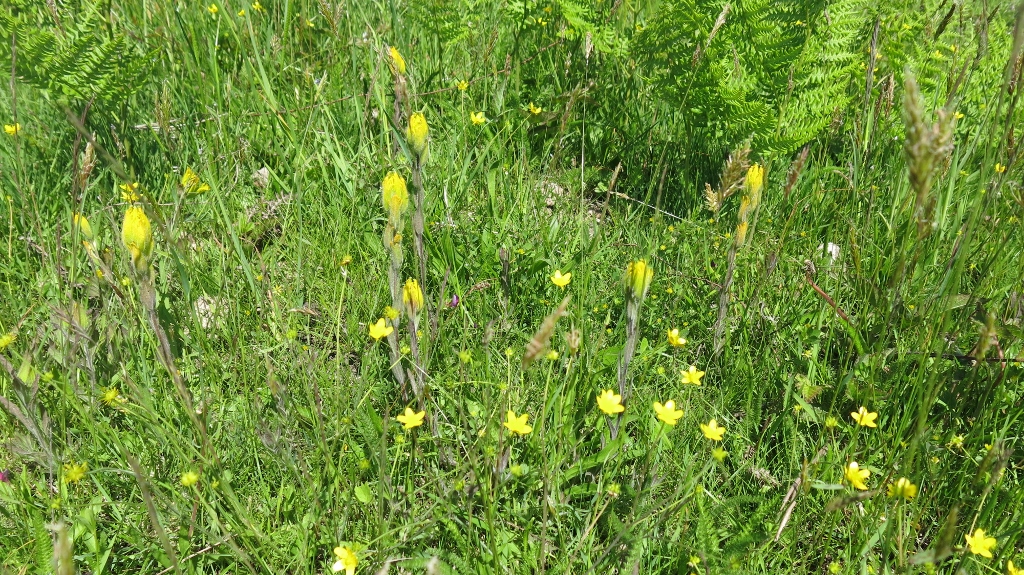Rubin-Rouen Conservation Easement & Preserve
San Juan Island
Year Protected: 2013
Land Protected: 42 acres
Public Benefits: Rare plant habitat, forestland, agricultural lands
Golden Indian paintbrush (Castilleja levisecta), a showy wildflower, once thrived throughout the coastal regions of the Pacific Northwest and Western Canada. It is now facing extinction. From Oregon’s Willamette Valley to the southern prairies of Puget Sound to the islands of the Salish Sea, most of this rare plant’s habitat has been either converted into agriculture or cleared away for human settlement. Today the plant is only known to exist on 11 sites in Washington and British Columbia, and even these populations are dwindling before our eyes. Both the United States and Canada now consider this an endangered species, and government agencies on both sides of the border are working urgently to bring the paintbrush populations back to a sustainable level.
In 1989, Rick Rubin and Patti Rouen purchased their property on San Juan Island. They built their home in the woods and placed horses and llamas in their pastures. Every spring they noticed masses of golden yellow spikes peeking out from the meadow grasses, but gave them little thought until US Fish & Wildlife biologists started taking notice. It turns out that – for some unknown reason – this modest little pasture is home to the second largest population of Golden Indian paintbrush in the world.
To date, most of these plants have been found on coastal sites in marginal growing conditions where there is no history of agricultural activity. The existence of a population on this inland property – which has been subject to generations of farming – has perplexed even the most experienced Castilleja researchers.
In late 2013, prior to Patti’s passing, she and Rick took steps to permanently protect this valuable property by donating both land and a conservation easement to the Preservation Trust. In addition to prohibiting future development of the paintbrush site, they have also generously allowed Preservation Trust botanists onsite to study the plants. Scientists who have dedicated their careers to working with Castilleja are excited to have the opportunity to learn more about this population. As Rick continues to manage this property, we hope to apply the lessons we learn to increase the worldwide population of this precious – and mysterious – prairie flower.

